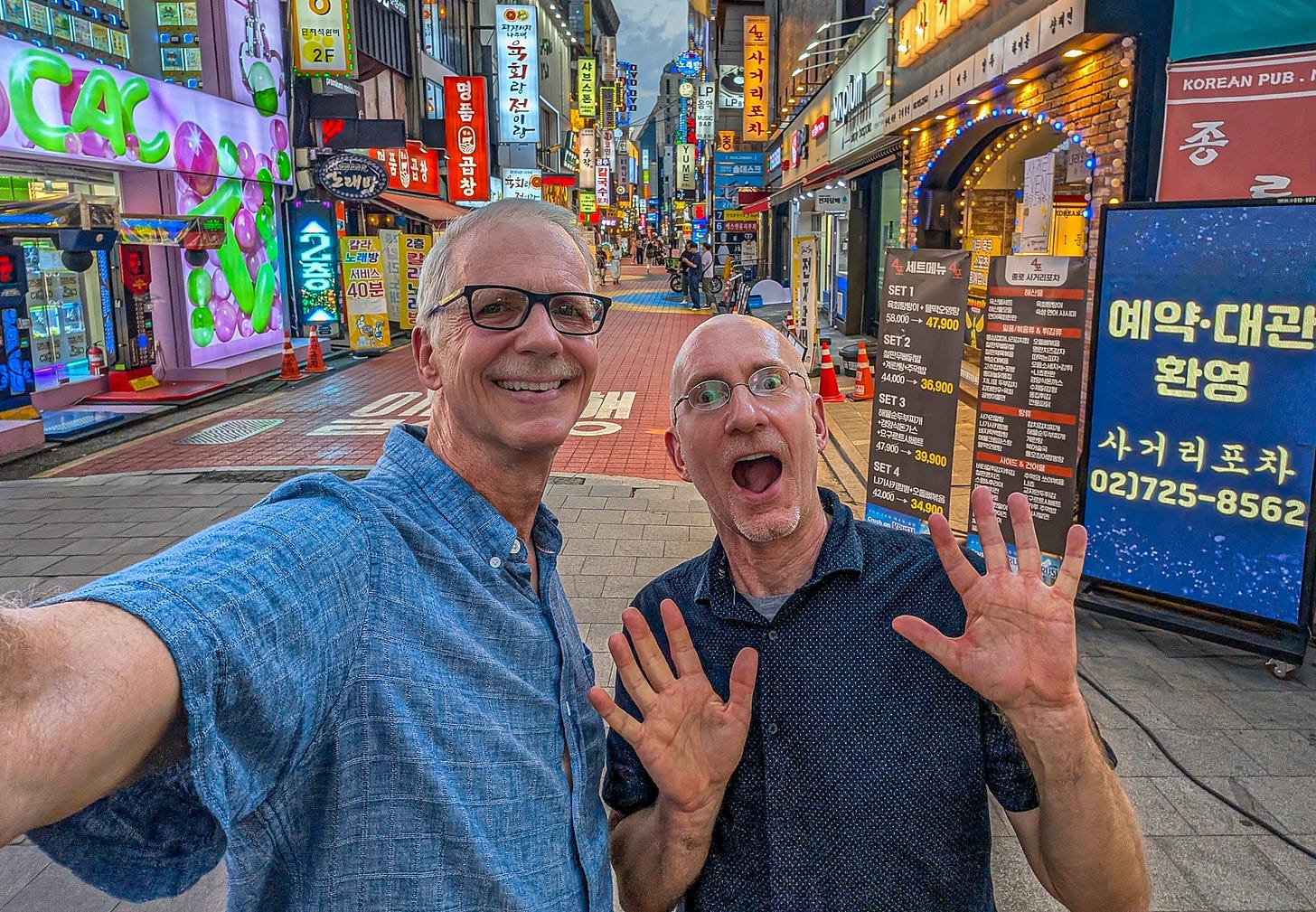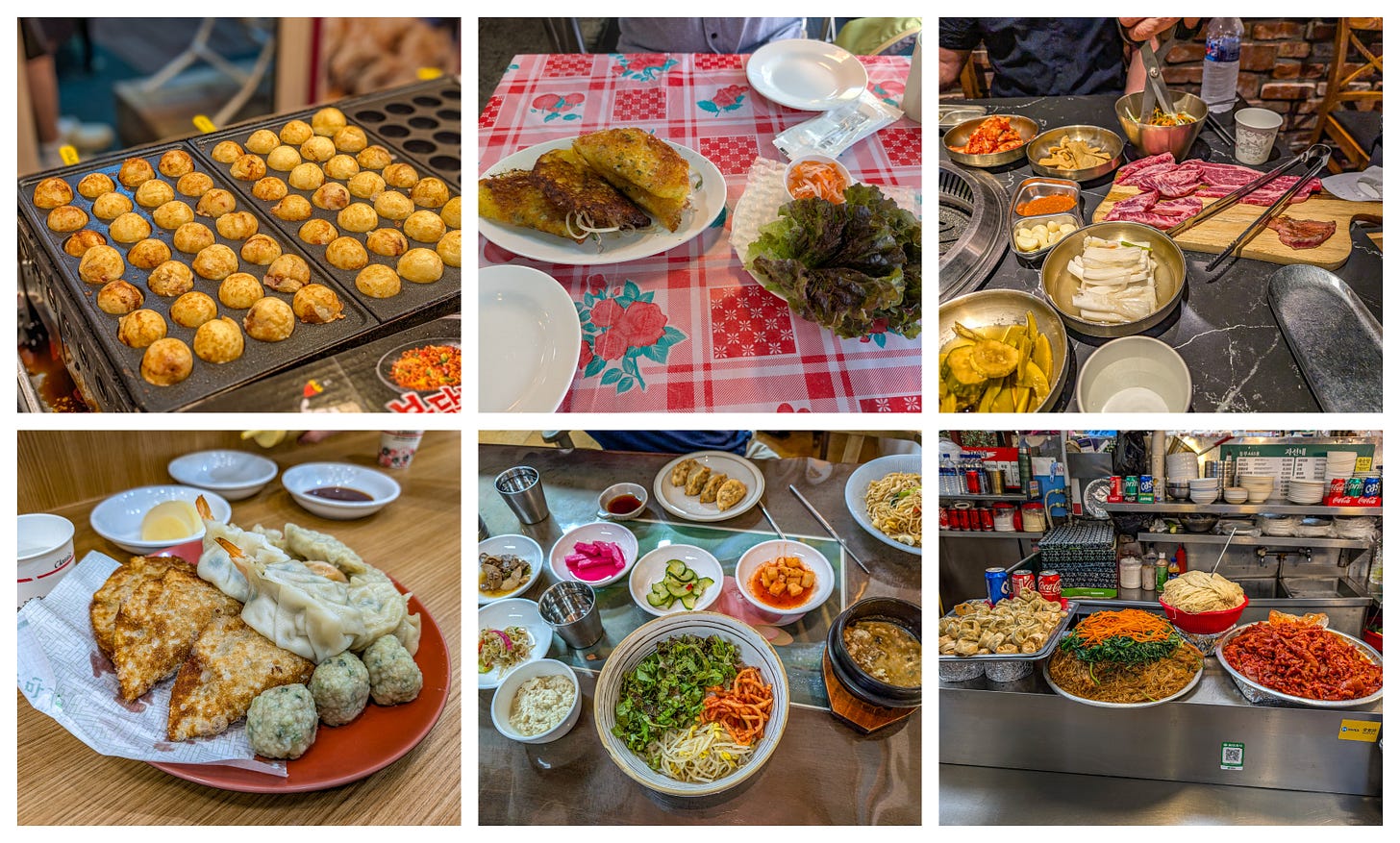The Place We're at Now: Seoul, South Korea
We had stereotypes. They were wrong. But maybe not entirely.
This is a regular feature about where we currently are in the world: how we ended up there, what it costs, and exactly what we think.
Honestly, I’d never given Seoul, South Korea, much thought.
I’ve thought a lot about many of the other great cities of Asia: famous, romantic places like Hong Kong, Tokyo, and my favorite city in the world, Bangkok.
But Seoul has never really been on my radar.
I’m not completely clueless: I do know South Korea is having a Big Cultural Moment right now, with K-pop and K-beauty sweeping the world, and Korean food suddenly becoming oh-so-trendy.
And a few years ago, the Korean film Parasite won the Oscar for Best Picture, and a Korean TV show, Squid Game, took the world by storm.
I still hadn’t given Seoul much thought, except maybe a few vague stereotypes.
But after spending a week here, Brent and I are both officially on the K-bandwagon.
Seoul is a fantastic city, and our only regret is that we can’t stay longer.
First, the food. In a week, we ate takoyaki, Vietnamese crepes, Korean BBQ, lots and lots of noodles, even more dumplings, bibimbap, and more.
But here’s the first misconception that went by the wayside: Brent tries to avoid meat, and despite all that Asian food, Korea is not the vegetarian’s paradise we assumed it would be.
Unless you go to an actual vegetarian restaurant, there is meat in virtually everything. In fact, one dumpling place had a sign out front in English: “There is pork in all our dumplings!” — even the “leek” and “vegetable” ones!
Here’s another misconception we had corrected: Seoul is massive — far bigger than we imagined.
Seoul city-proper clocks in at just over 10 million, but the entire metropolitan area is home to 25 million people — almost half of the whole country's population. This makes it the fourth-largest metro area in the entire world.
Spending time here, this quickly becomes obvious. Despite its very high population density, the city seems to go on forever.
Seoul mostly looks very prosperous too.
But only seventy years ago, South Korea was one of the poorest countries in the world.
It had been devastated by decades of Japanese occupation, followed by the Korean War (between North Korea, supported by China and the Soviet Union, and South Korea, supported by the United States and the United Nations).
But after the war, with more help from the United States, South Korea quickly began to modernize — and especially to urbanize with millions of South Koreans flooding into the country’s capital. Manufacturing exploded.
And starting in the 1960s, their standard of living began to rise rapidly. By the 1990s, Korea had emerged as one of the four economic powerhouses known as the “Asian tigers” (along with Hong Kong, Singapore, and Taiwan).
Today, South Korea is the most important of the tigers. It has the 13th largest economy in the world, and its GDP is double that of Taiwan, its closest competitor.
To see the country’s economic success, you simply have to look around at all the shopping malls and gleaming high-rises, including Lotte World Tower, the world's sixth-tallest building.
On the other hand, some Koreans think the rat race has become too fast. Earlier, I mentioned Parasite and Squid Game? It’s not a coincidence that both those projects pointedly criticize capitalism.
In any event, to Korea’s list of economic and cultural triumphs, you can now also add: hot tourist mecca.
Thanks to all of that cultural visibility, South Korea has experienced a surge in international tourism. Foreign visitors are set to surpass twenty million this year — a record. The first quarter alone was up almost 15% year-over-year.
What are all of these tourists coming to see?
We’ll get to that shortly, but first…
How did we end up here?
Keep reading with a 7-day free trial
Subscribe to Brent and Michael Are Going Places to keep reading this post and get 7 days of free access to the full post archives.






